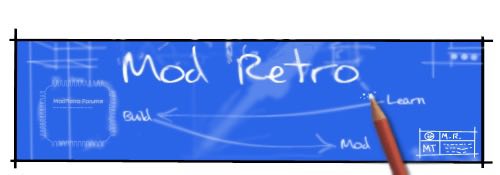Here's most of the stuff I've already done:
Wii compendium junk
(giant images) -
http://forums.shockslayer.com/viewtopic.php?f=65&t=188
Regulators info -
http://forums.shockslayer.com/viewtopic.php?f=65&t=217
Basically, there are two ways you can go about figuring out how to trim the Wii:
1. The expensive way: just start cutting and see if you can make it work.
2. The slower, cheaper way: sand and scan layers and put together a compendium.
So, what's a compendium you ask? Well, basically, you take one side of the motherboard, remove all the components and sand off the paint/silkscreen junk so you just have the copper, then you scan it into the computer. Then you do the same for the other side, and then line up your two motherboard scans in an image editor, and now you can easily flip between layers and see where everything goes! Then you can draw on that and trace out stuff easily, all
without having to kill countless motherboards. Here's the shining example:
viewtopic.php?f=33&t=9817
So, obviously, having a compendium would save everyone countless hours of troubleshooting and allow us to "propose" much more reliable and less work intensive trims. That's why you see everyone cut N64's into weird shapes, because we know "Okay, so I can cut all this off, but if I cut past here I have to do some insane rewiring, etc."
Here are some samples of the Wii compendium I was working on.
A/V pinout:
Some power tracing:
I'll have to look around on my computer for the junk I've already got done and host it. It's all done in
Paint.NET, because it's free, not complicated, and allows you to work in layers so that's all you really need.
So, trim-related things we've accomplished with the Wii so far:
1. I've removed all the onboard regulators and replaced them with TI regs(see second thread above), so
7.4v has been done.
2. Zenloc's claimed to have trimmed a Wii to the size of a gamecube, or one of the gamecube trims, I can't quite remember which. So someone's done neat stuff already, just waiting on documentation.
Now let's talk about
revision differences. If the Wii's like the N64, it shouldn't be too much of an issue. Usually only small things get changed between revisions. Here's the thing that makes that less painful though, and again drawing from our N64/GC experiences,
RCP wiring is the exact same for every revision. Because regardless of what path the cart slot takes on the board,
because it's the same chip it must
always go to the same place on the RCP. I believe this is also true with the gamecube.
Ashen's traced gamecube stuff all the way up to the CPU, so regardless of GC revision you should be able to wire to these same points and it'll work.
So I'm thinking the Wii's gonna be the exact same way as it's two predecessors. All Wii's use the same CPU I think. Meaning that, if we got at least one good compendium for one revision, we can trace everything up to the CPU, and then we can have a constant reference point for everything. And if we have that,
getting trims for every revision wouldn't be a problem. Even obnoxious revisions like the Wii Mini.
I already said all this though, it's just a matter of doing it.  So anyways, about getting GOOD board scans, here's what I've learned:
-Sanding
1.
So anyways, about getting GOOD board scans, here's what I've learned:
-Sanding
1. Hand sand the top layers. The finer the grit the better, smoother copper is more legible scanned in, I could make an example pic.
2. Belt sanders are basically a no-go. It's too easy to screw up, especially once you get past the top layers, which you should be hand sanding anyways.
3. Peeling traces off can work wonders for layer removal, but should be used sparingly.
4. Inner layers are finer than the outer ones, so be more careful with those.
5. Sand the previous layer entirely off. We're looking for scans that
clearly show just the single layer, if you leave junk on from the above layer it complicates things and could easily hide more traces, and it's a pain to look at.
- Examples of what not to do:
This or
this.
- Examples of good sands:
This and then
this!
-Scanning
1. Scan at the highest DPI you can. It's easier to make things smaller than it is to make things bigger.
2. Make sure that the board is completely flat up against the scanner. If it's warped even a little bit, that part won't be as clear and may be unusable.
3. Host on a
file sharing site, not an
image sharing site. Image sharing sites like to compress, resize, weird junk we don't want. If need be you can just email me junk and I'll gladly host it in all it's glory for you.
-General tips and ideas I have
1. CNCing a board could be a viable option, after sanding and scanning the bottom layer, superglue it to a super flat piece of wood or something, then find a CNC machine with very precise Z depth and go down by ridiculously tiny increments.
2. It's a good idea to write down all the revision stuff somewhere before you sand.
That's about all I have to say right now, if I think of other useless nonsense I'll definitely post it.
SS








